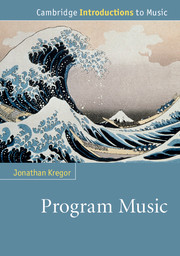Book contents
- Frontmatter
- Contents
- List of Figures
- List of Music examples
- List of Tables
- Acknowledgments
- Note on the text
- Introduction
- Chapter 1 Characters, topics, and the programmatic battlefield
- Chapter 2 Expression, musical painting, and the concert overture
- Chapter 3 Berlioz and Schumann on music and literature
- Chapter 4 Liszt and the symphonic poem
- Chapter 5 The New German School and beyond
- Chapter 6 Excursus: Faust
- Chapter 7 Programmatic paths around the fin de siècle: Mahler and Strauss
- Chapter 8 Programming the nation
- Chapter 9 “Ars Gallica”
- Notes
- Guide to further reading
- Index
Chapter 3 - Berlioz and Schumann on music and literature
Published online by Cambridge University Press: 05 January 2015
- Frontmatter
- Contents
- List of Figures
- List of Music examples
- List of Tables
- Acknowledgments
- Note on the text
- Introduction
- Chapter 1 Characters, topics, and the programmatic battlefield
- Chapter 2 Expression, musical painting, and the concert overture
- Chapter 3 Berlioz and Schumann on music and literature
- Chapter 4 Liszt and the symphonic poem
- Chapter 5 The New German School and beyond
- Chapter 6 Excursus: Faust
- Chapter 7 Programmatic paths around the fin de siècle: Mahler and Strauss
- Chapter 8 Programming the nation
- Chapter 9 “Ars Gallica”
- Notes
- Guide to further reading
- Index
Summary
In a review from December 1899 of Hector Berlioz’s recently published “private letters” (“lettres intimes”), Camille Saint-Saëns tried to put his finger on what made Berlioz, who had been dead thirty years yet whose position in French music was still being fiercely debated, tick:
Like the mystics who reached the point of experiencing the pains of the Passion in their own bodies, Berlioz experienced the torments of Faust, Hamlet and Manfred. He incarnated in himself these poetic creations, whose imaginary sufferings were metamorphosed in him into real ones. Was it Camille and Henriette he loved, or rather Ophelia and Ariel? At some moments it is no longer he who lives, but Shakespeare who lives in him. We are observers of a curious phenomenon of poetic mysticism, leading, like the religious kind, to serious disorders of the nervous system and to a cruel and interminable torture that slowly eats into one’s existence and ceases only in death.
Saint-Saëns admits that Berlioz was perhaps too Romantic for his own good, having let himself get immersed in the fictional worlds of Johann Wolfgang von Goethe, William Shakespeare, and Lord Byron to the detriment of his reputation and personal life. The criticism, of course, says as much about Saint-Saëns’s musical aesthetics as it does Berlioz’s (see Chapter 9); but the reviewer nevertheless hits the nail on the head when, in a more extended consideration from the same year, he characterizes Berlioz as “a paradox made flesh.”
- Type
- Chapter
- Information
- Program Music , pp. 69 - 98Publisher: Cambridge University PressPrint publication year: 2015

